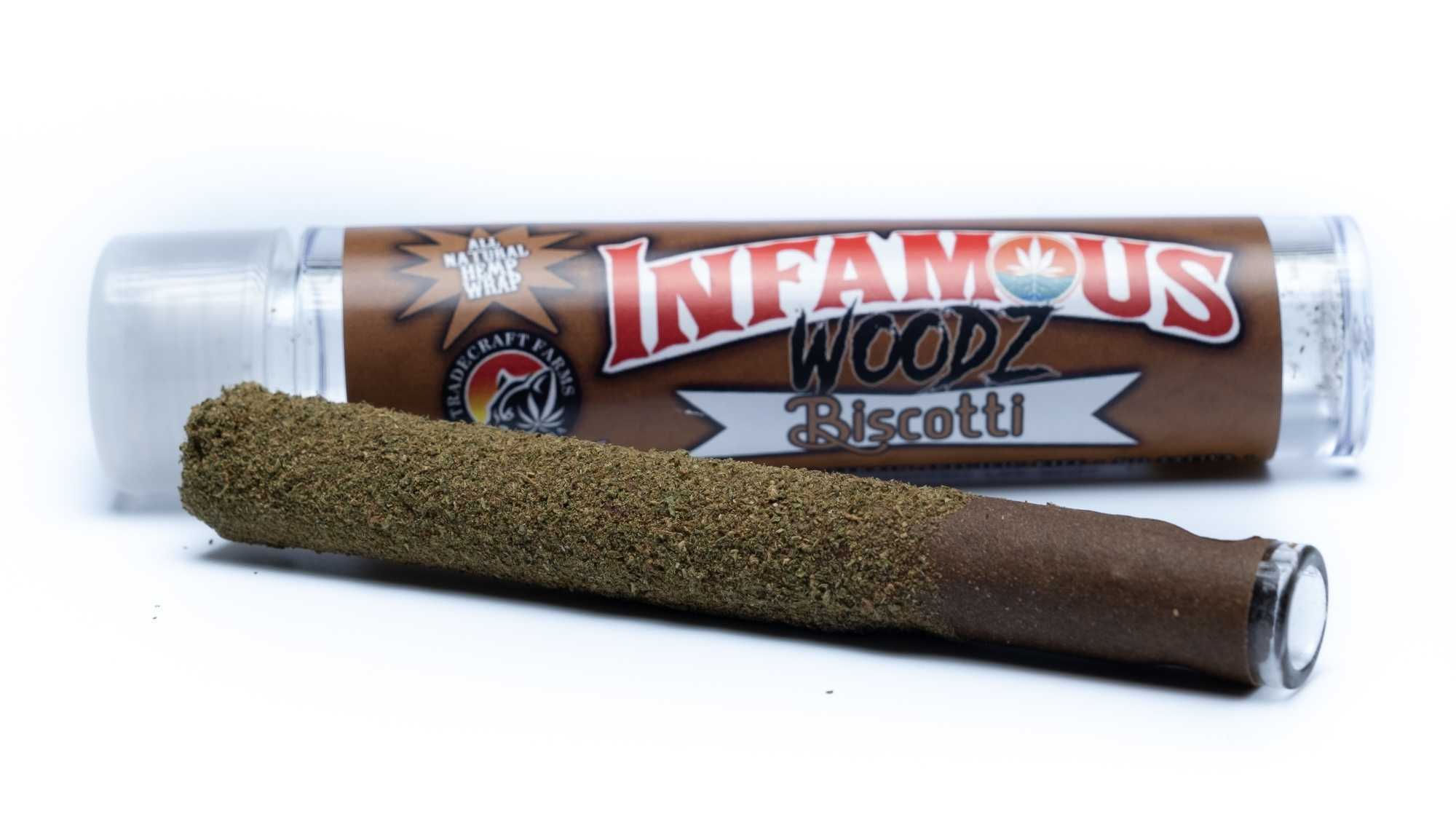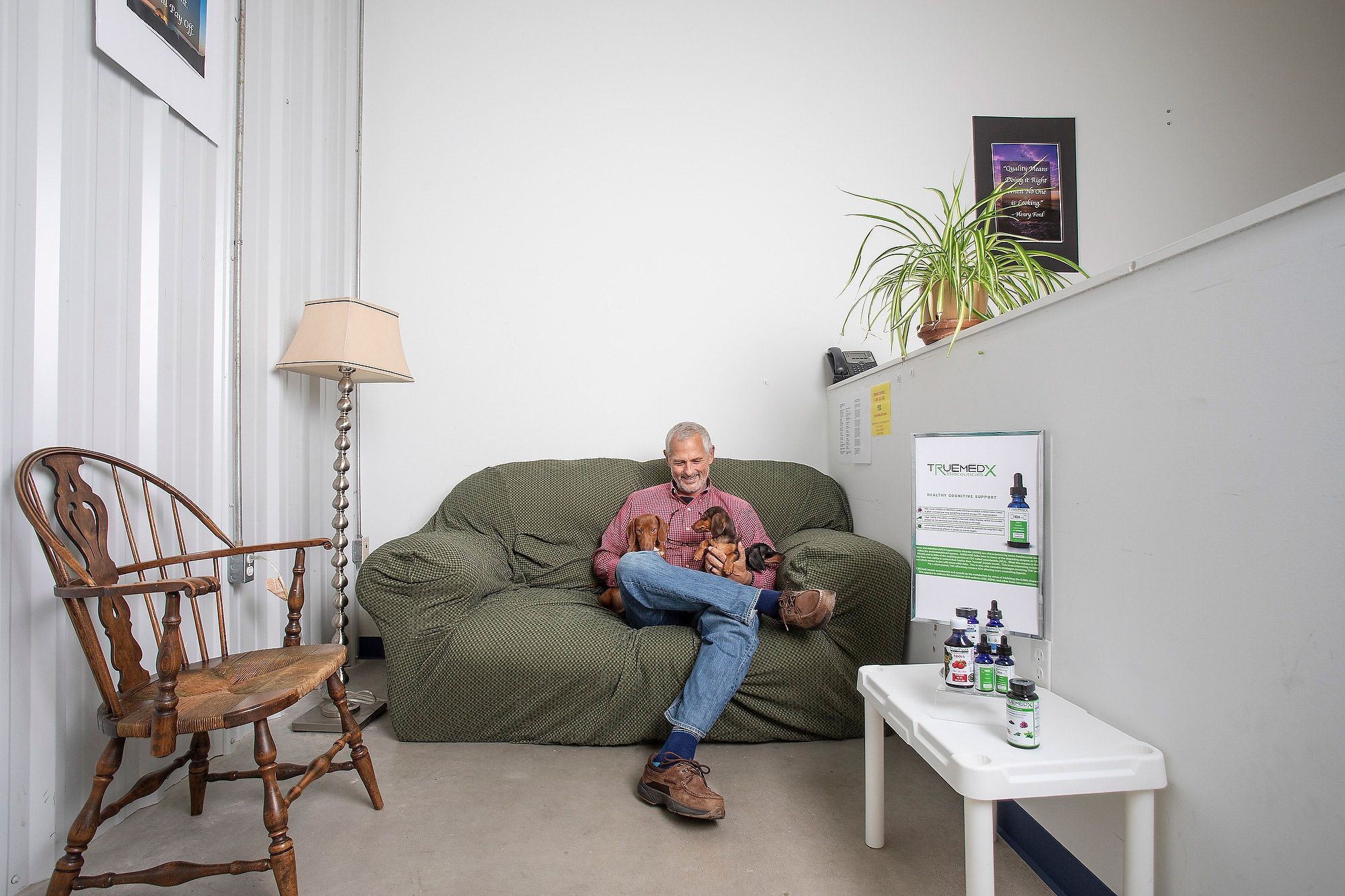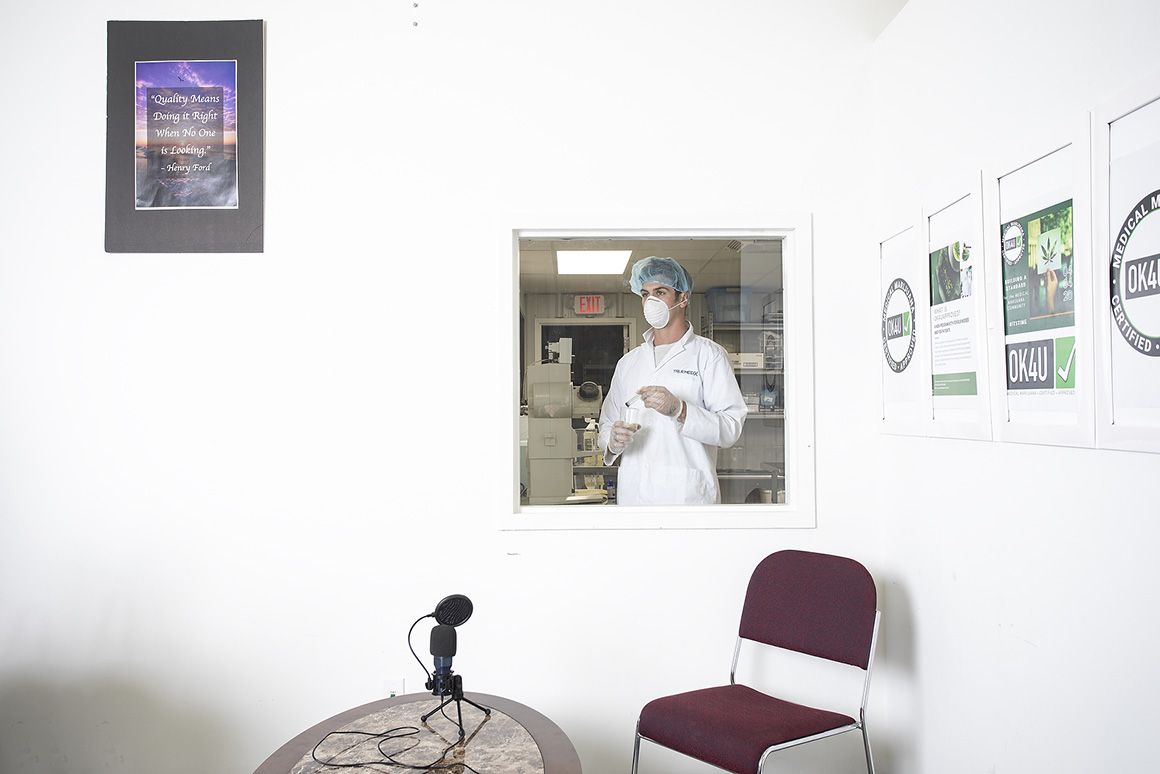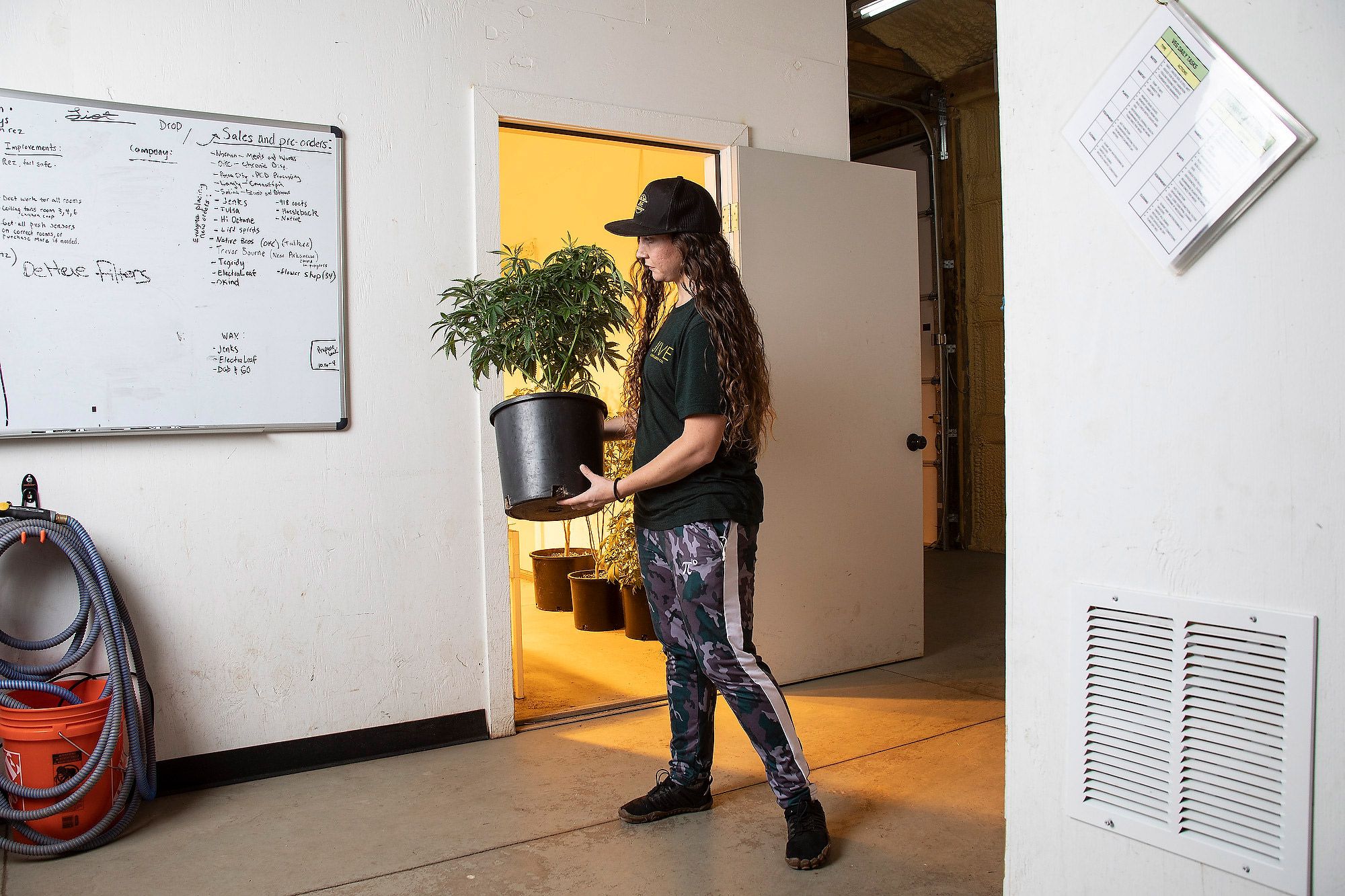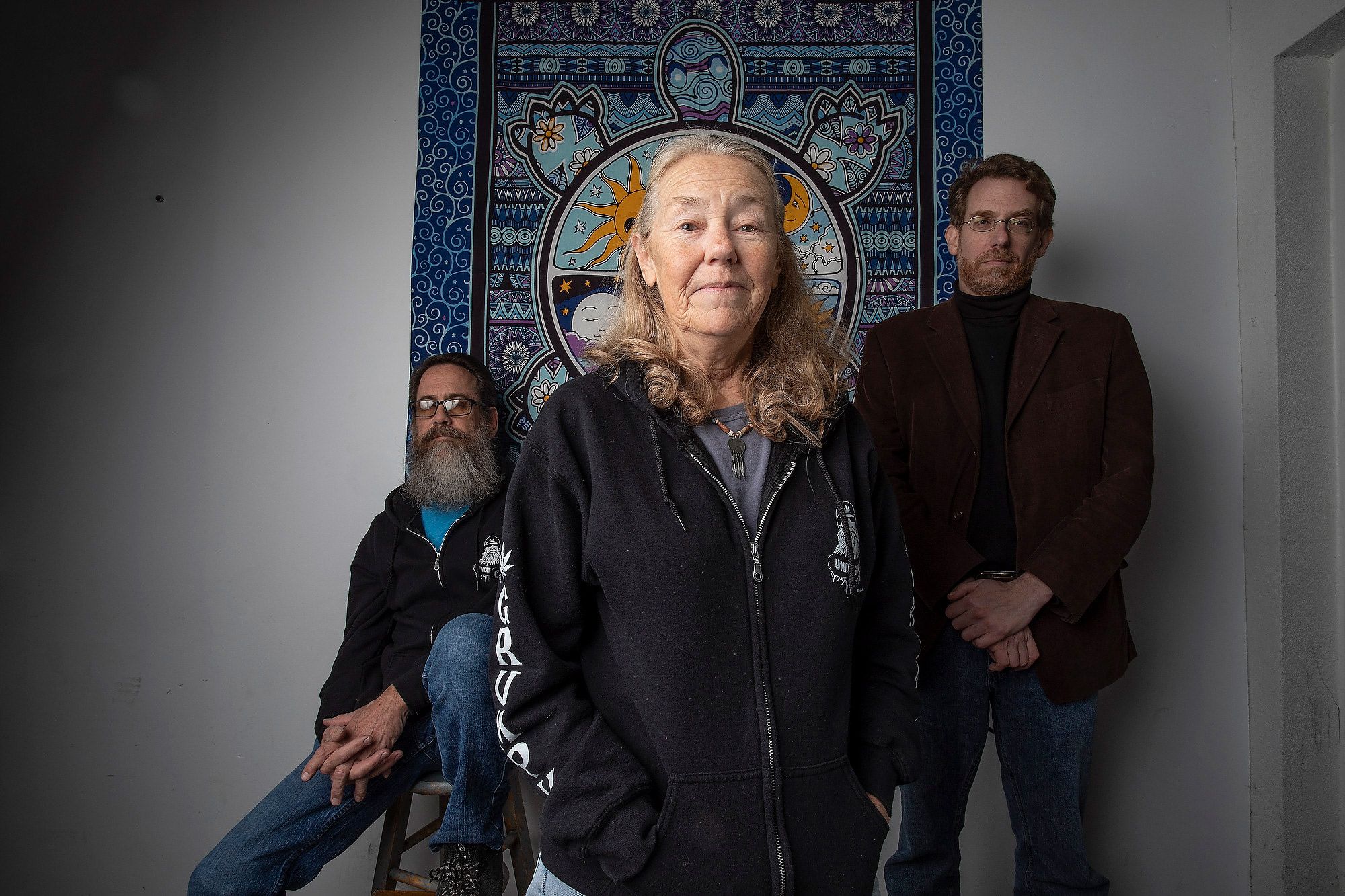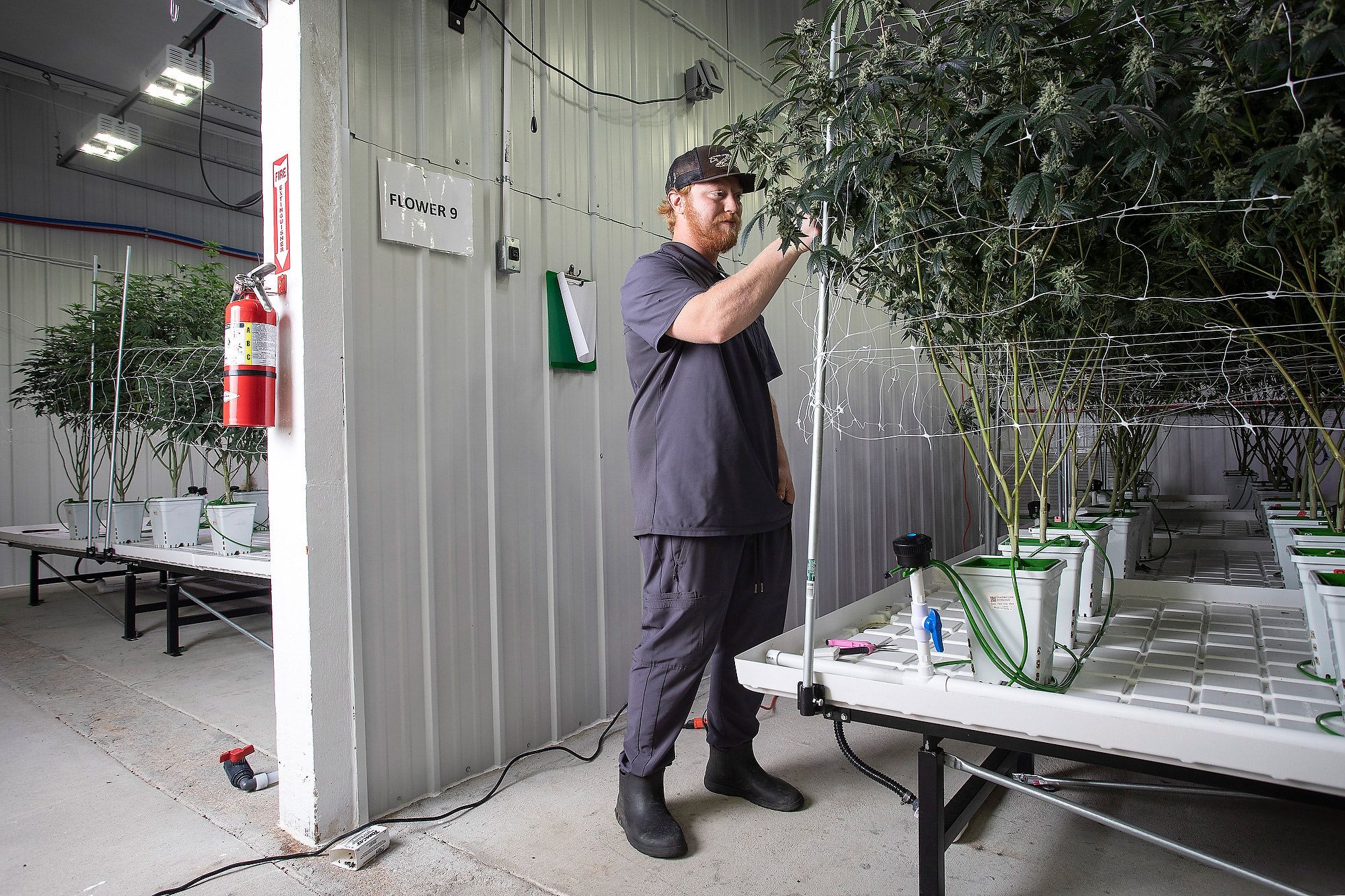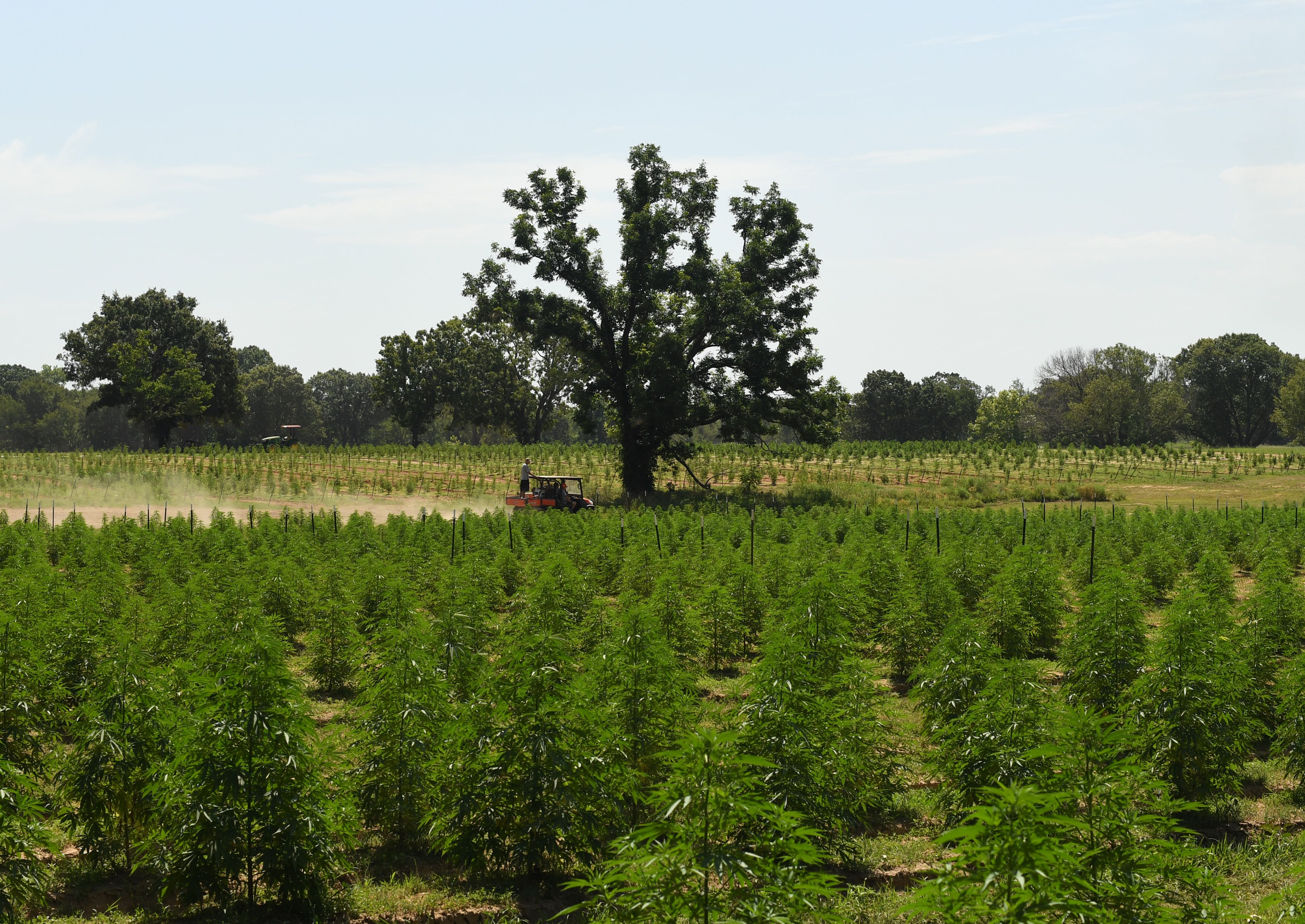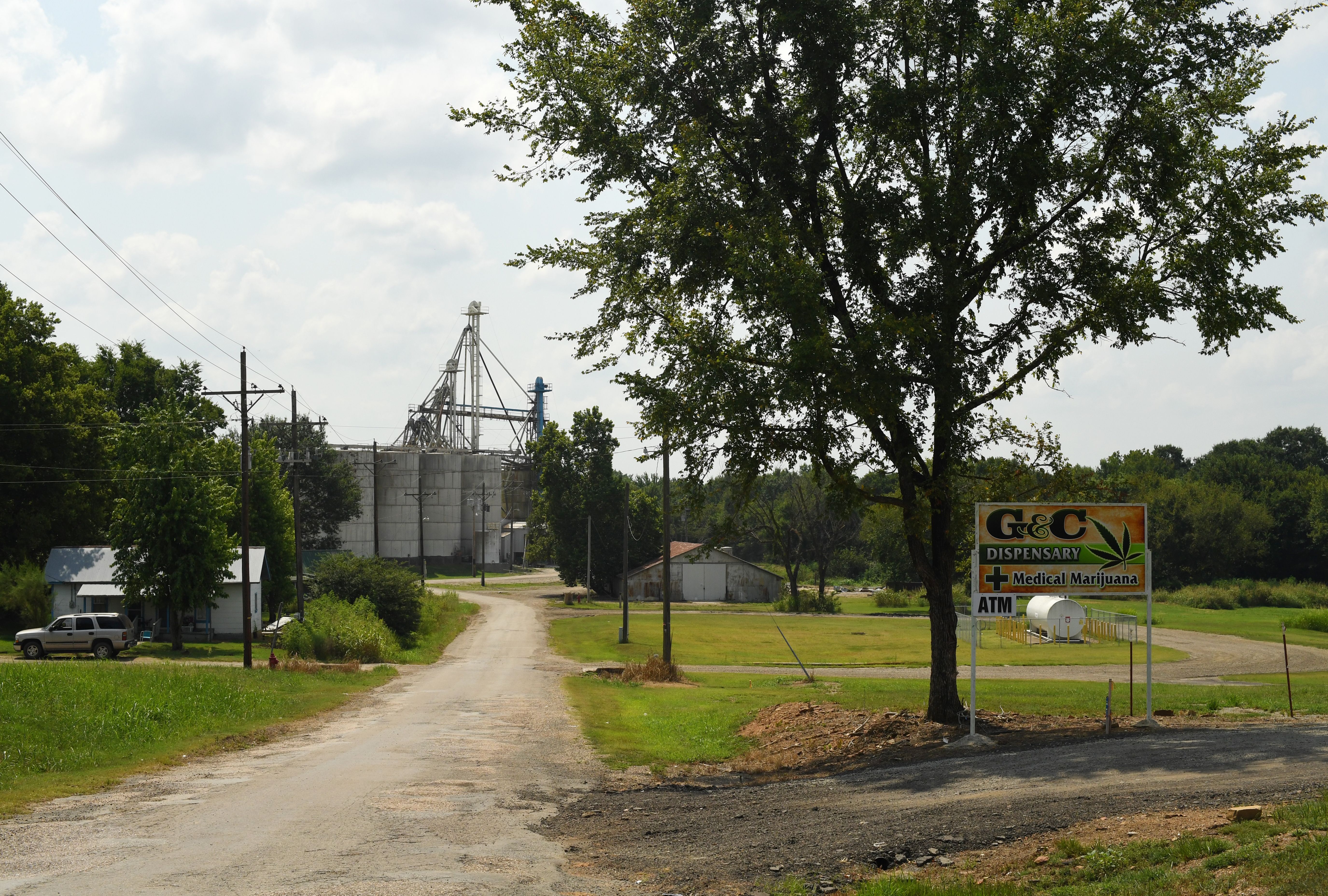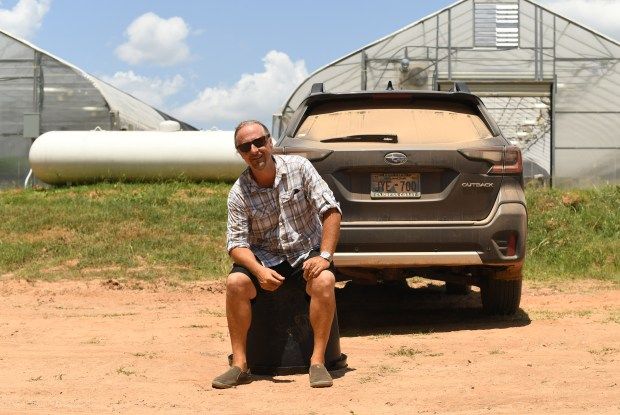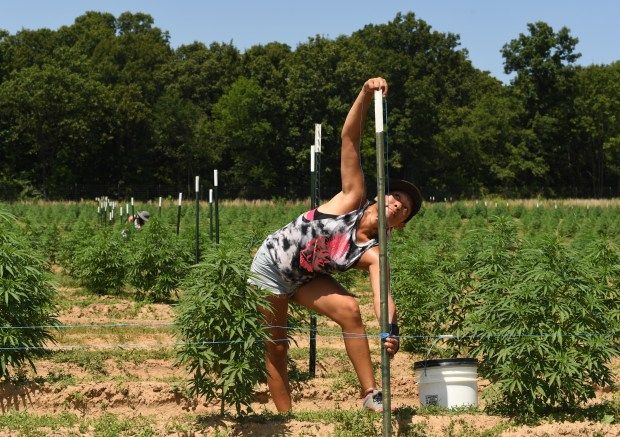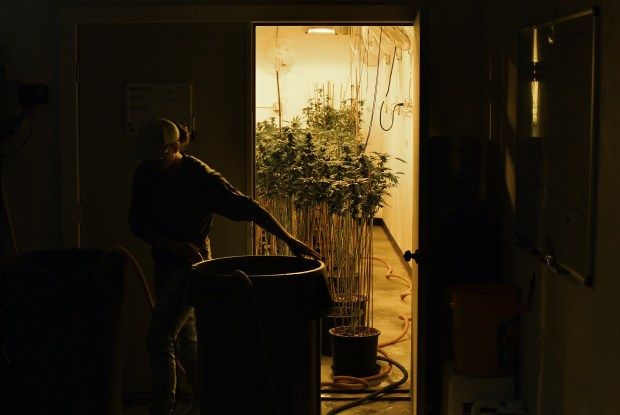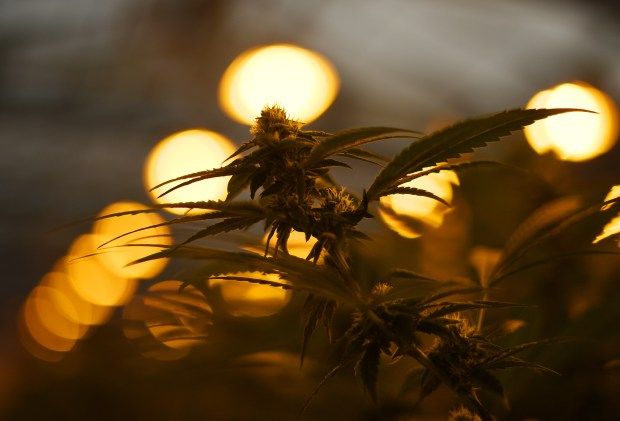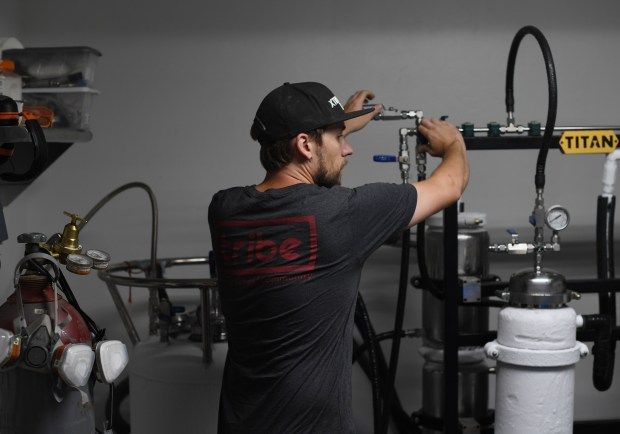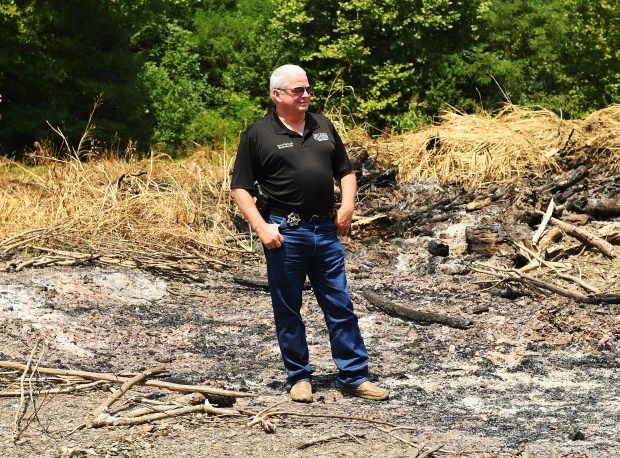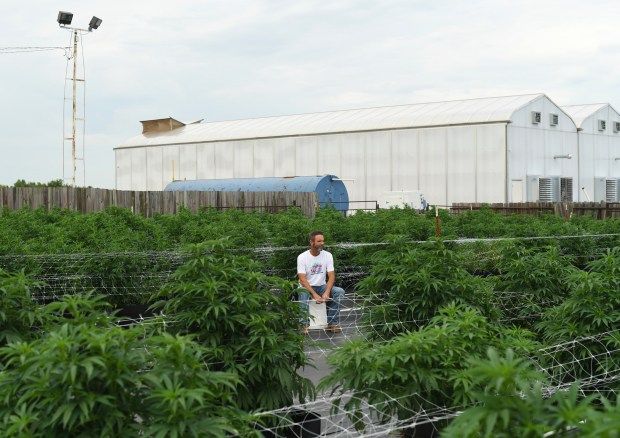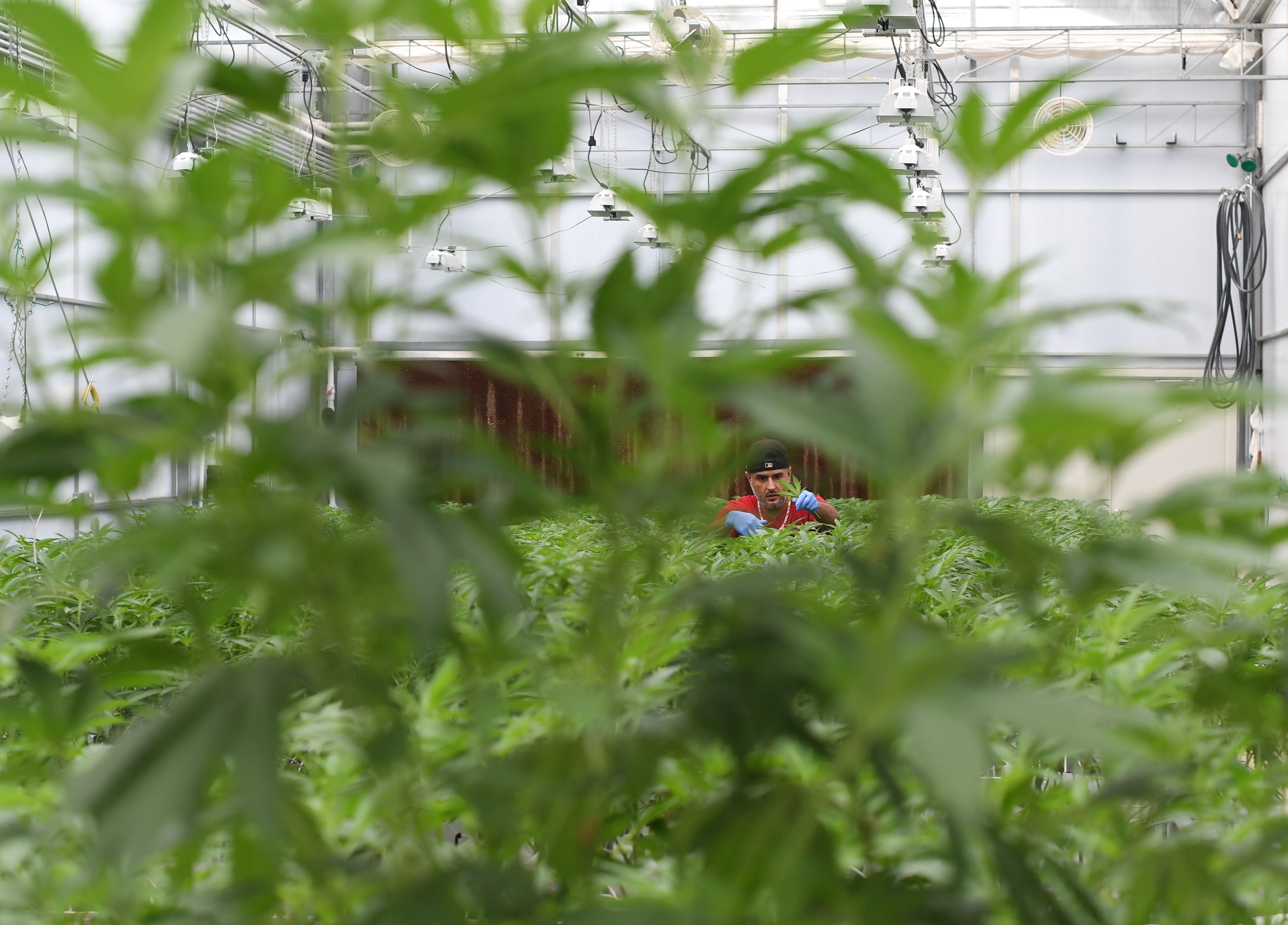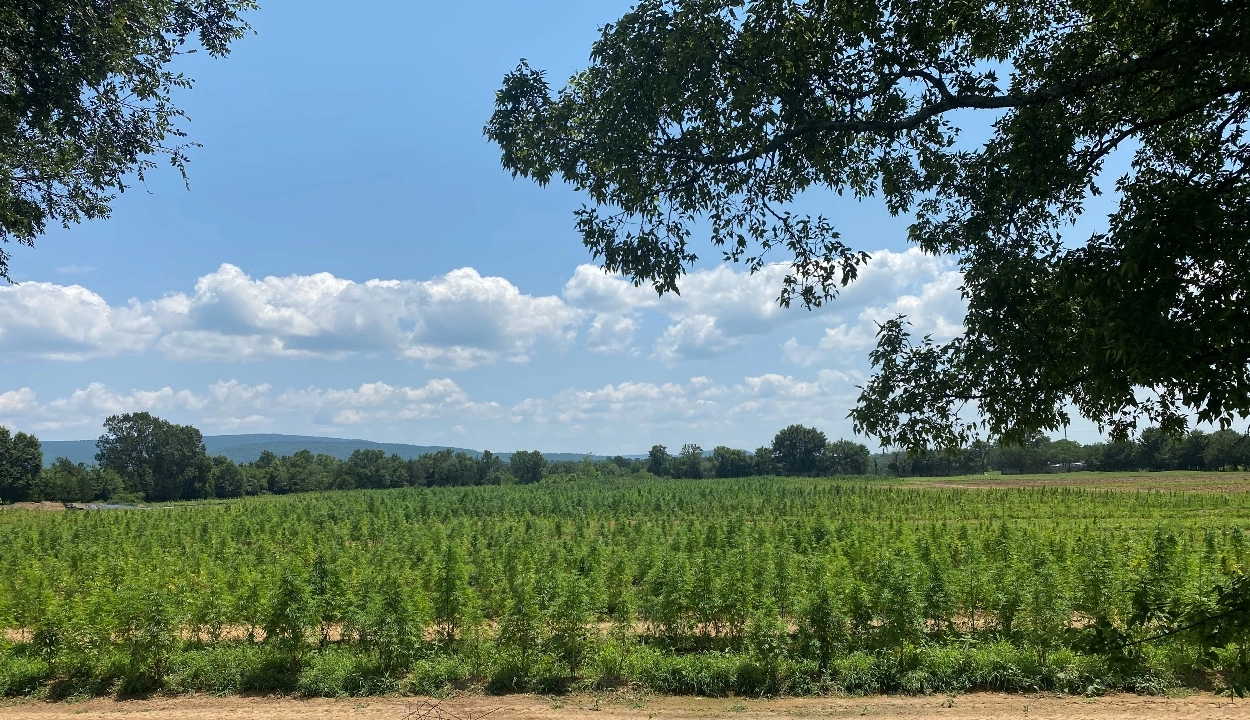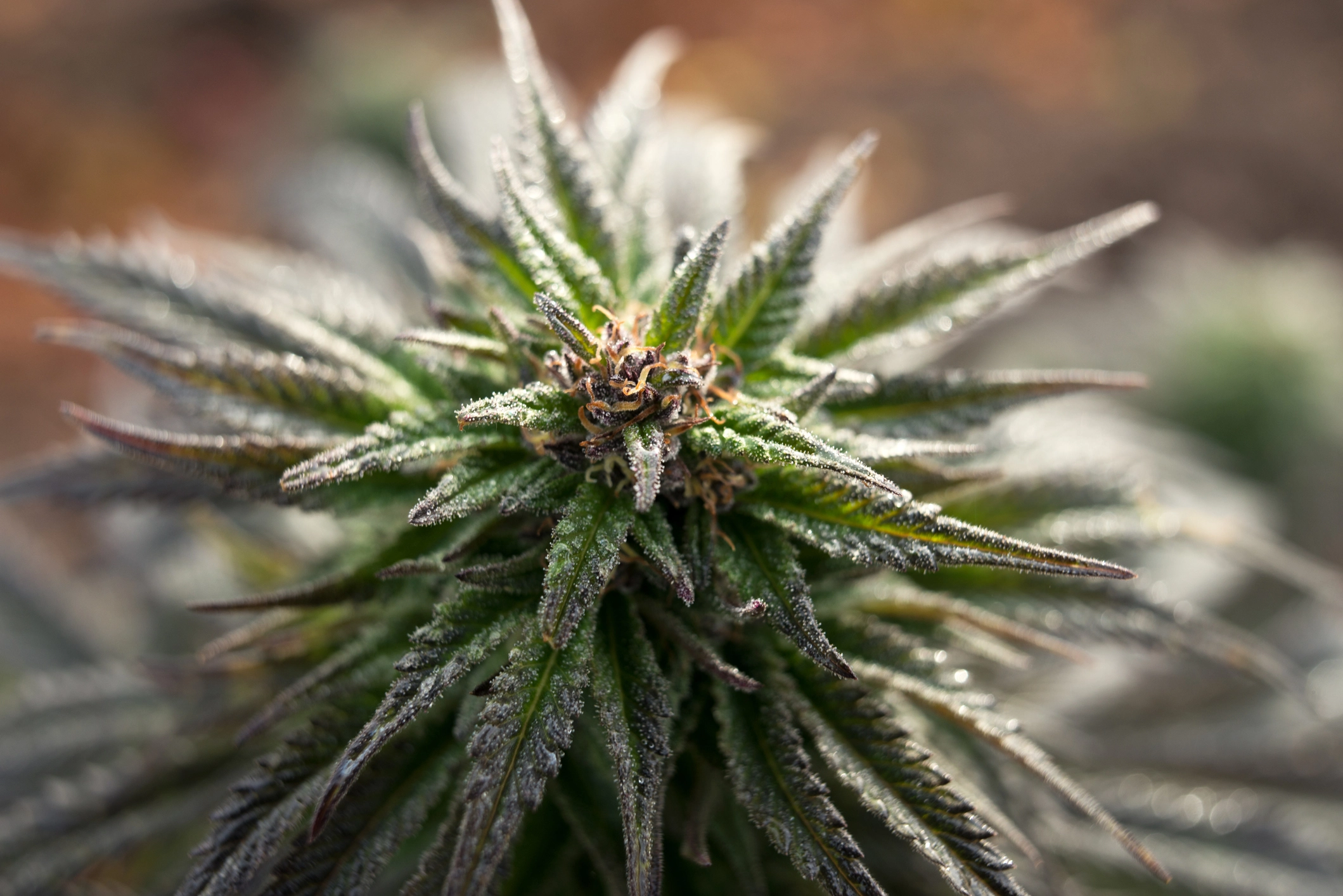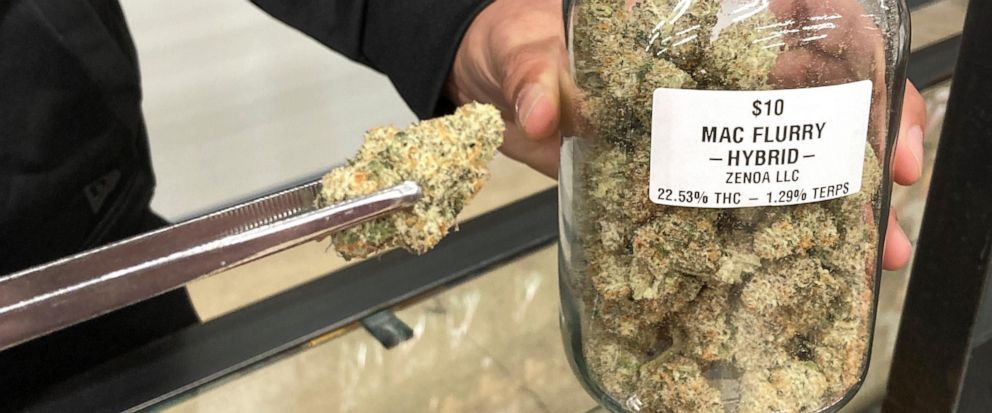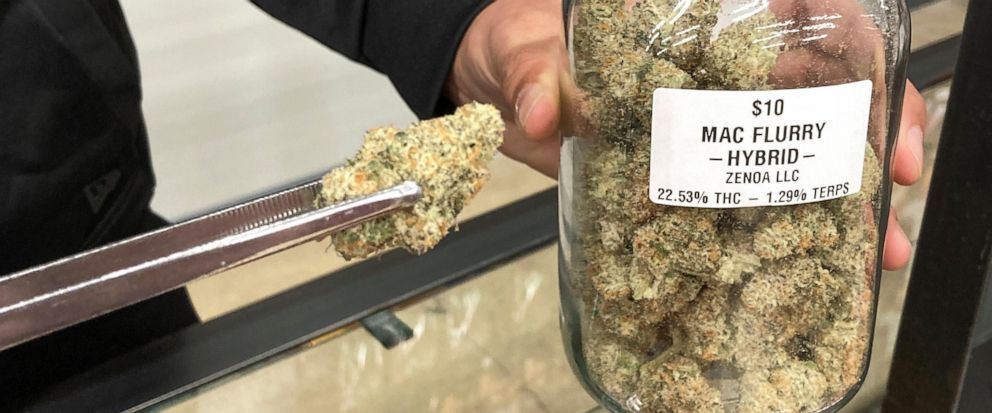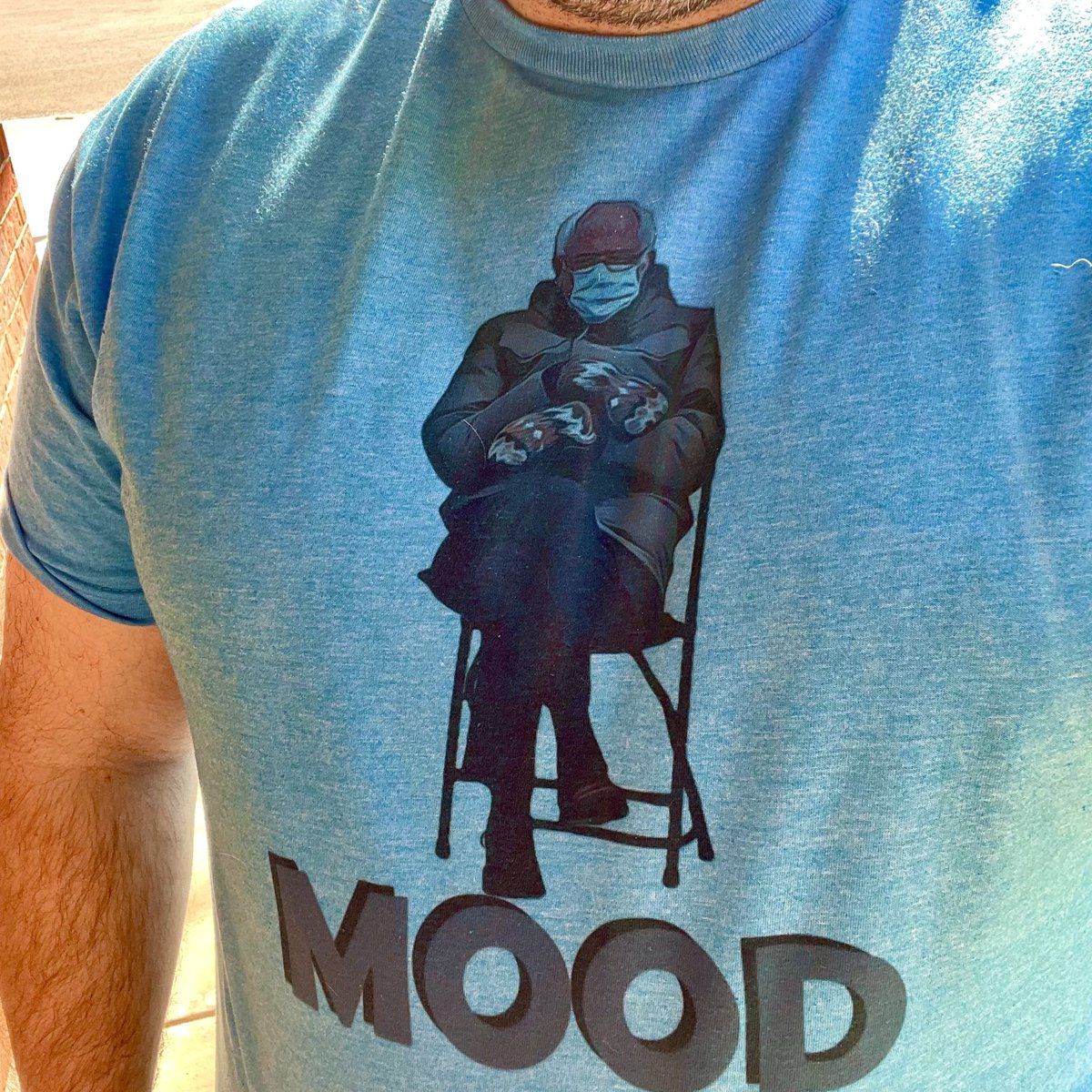While it may be the buckle on the bible belt, and has a reputation of being very conservative (in the real sense of that word and not politically though that can be argued also), they seem to have a real libertarian streak in them in OK. Who knew? haha
One day in the early fall of 2018, while scrutinizing the finances of his thriving Colorado garden supply business, Chip Baker noticed a curious development: transportation costs had spiked fivefold. The surge, he quickly determined, was due to huge shipments of cultivation supplies—potting soil, grow lights, dehumidifiers, fertilizer, water filters—to Oklahoma.
Baker, who has been growing weed since he was 13 in Georgia, has cultivated crops in some of the world’s most notorious marijuana hotspots, from the forests of Northern California’s Emerald Triangle to the lake region of Switzerland to the mountains of Colorado. Oklahoma was not exactly on his radar. So one weekend in October, Baker and his wife Jessica decided to take a drive to see where all their products were ending up.
Voters in the staunchly conservative state had just four months earlier authorized a medical marijuana program and sales were just beginning. The Bakers immediately saw the potential for the fledgling market. With no limits on marijuana business licenses, scant restrictions on who can obtain a medical card, and cheap land, energy and building materials, they believed Oklahoma could become a free-market weed utopia and they wanted in.
Chip Baker smokes a joint in his house at the farm where he grows marijuana in Wellston, Oklahoma.
Within two weeks, they found a house to rent in Broken Bow and by February had secured a lease on an empty Oklahoma City strip mall. Eventually they purchased a 110-acre plot of land down a red dirt road about 40 miles northeast of Oklahoma City that had previously been a breeding ground for fighting cocks and started growing high-grade strains of cannabis with names like Purple Punch, Cookies and Cream and Miracle Alien.
“This is exactly like Humboldt County was in the late 90s,” Baker says, as a trio of workers chop down marijuana plants that survived a recent ice storm. “The effect this is going to have on the cannabis nation is going to be incredible.”
Oklahoma is now the biggest medical marijuana market in the country on a per capita basis. More than 360,000 Oklahomans—nearly 10 percent of the state’s population—have acquired medical marijuana cards over the last two years. By comparison, New Mexico has the country’s second most popular program, with about 5 percent of state residents obtaining medical cards. Last month, sales since 2018 surpassed $1 billion.
To meet that demand, Oklahoma has more than 9,000 licensed marijuana businesses, including nearly 2,000 dispensaries and almost 6,000 grow operations. In comparison, Colorado—the country’s oldest recreational marijuana market, with a population almost 50 percent larger than Oklahoma—has barely half as many licensed dispensaries and less than 20 percent as many grow operations. In Ardmore, a town of 25,000 in the oil patch near the Texas border, there are 36 licensed dispensaries—roughly one for every 700 residents. In neighboring Wilson (pop. 1,695), state officials have issued 32 cultivation licenses, meaning about one out of 50 residents can legally grow weed.
“Turns out rednecks love to smoke weed. That’s the thing about cannabis: It really bridges socio-economic gaps.”
CHIP BAKER
What is happening in Oklahoma is almost unprecedented among the 35 states that have legalized marijuana in some form since California voters backed medical marijuana in 1996. Not only has the growth of its market outstripped other more established state programs but it is happening in a state that has long stood out for its opposition to drug use. Oklahoma imprisons more people on a per-capita basis than just about any other state in the country, many of them non-violent drug offenders sentenced to lengthy terms behind bars. But that state-sanctioned punitive streak has been overwhelmed by two other strands of American culture—a live-and-let-live attitude about drug use and an equally powerful preference for laissez-faire capitalism.
“Turns out rednecks love to smoke weed,” Baker laughs. “That’s the thing about cannabis: It really bridges socio-economic gaps. The only other thing that does it is handguns. All types of people are into firearms. All types of people are into cannabis.”
Indeed, Oklahoma has established arguably the only free-market marijuana industry in the country. Unlike almost every other state, there are no limits on how many business licenses can be issued and cities can’t ban marijuana businesses from operating within their borders. In addition, the cost of entry is far lower than in most states: a license costs just $2,500. In other words, anyone with a credit card and a dream can take a crack at becoming a marijuana millionaire.
“They’ve literally done what no other state has done: free-enterprise system, open market, wild wild west,” says Tom Spanier, who opened Tegridy Market (a dispensary that takes its name from
South Park) with his wife in Oklahoma City last year. “It’s survival of the fittest.”
The hands-off model extends to patients, as well. There’s no set of qualifying conditions in order to obtain a medical card. If a patient can persuade a doctor that he needs to smoke weed in order to soothe a stubbed toe, that’s just as legitimate as a dying cancer patient seeking to mitigate pain. The cards are so easy to obtain—$60 and a five-minute consultation—that many consider Oklahoma to have a de facto recreational use program.
But lax as it might seem, Oklahoma’s program has generated a hefty amount of tax revenue while avoiding some of the pitfalls of more intensely regulated programs. Through the first 10 months of this year, the industry generated more than $105 million in state and local taxes. That’s more than the $73 million expected to be produced by the state lottery this fiscal year, though still a pittance in comparison to the overall state budget of nearly $8 billion. In addition, Oklahoma has largely escaped the biggest problems that have plagued many other state markets: Illegal sales are relatively rare and the low cost to entry has made corruption all but unnecessary.
All of which has made Oklahoma an unlikely case study for the rest of the country, which continues its incremental march toward universal legalization. Oklahoma is struggling with the sudden growing pains common to all booms. As pretty much everyone acknowledges, the market simply can’t sustain the number of businesses currently operating. Meanwhile, state regulators are trying to introduce a seed-to-sale tracking system that many say is necessary to avert a public health disaster without cutting off the flow of tax revenue that they have come to rely on in lean budget times.
“This is a perfect test in front of the world,” says Norma Sapp, who has been waging an often lonely campaign for marijuana legalization in Oklahoma for more than three decades. “How will this shake out?”
Chip Paul was among a group of advocates that worked for years to legalize medical marijuana in Oklahoma.
HOW OKLAHOMANS LEARNED TO LOVE WEED
The yawning gap between Oklahoma’s official attitude toward marijuana and public opinion was first revealed in 2013.
At that time, the overwhelming consensus among the state’s lawmakers was that the best way to deal with illegal drug use—including marijuana consumption—was to lock up lots of Oklahomans for long periods of time.
“I knew that we were ruining families,” Sapp says of the state’s harsh criminal penalties. “It literally will take generations to repair the damage that we’ve done to people and their children and their grandchildren.”
Sapp managed to cobble together enough funding to commission a poll gauging whether there was support for overhauling the state’s marijuana policies. The
surprising findings: 57 supported ending criminal penalties for possessing small amounts of marijuana, while 71 percent backed legalizing medical marijuana. At that time, voters in Colorado and Washington had just become the first in the country to back full legalization, but most red states in the Midwest and Great Plains hadn’t even authorized medical programs.
But the realization that public officials were so far out of touch with public opinion inspired a small group of politically diverse activists to challenge the conservatives’ stranglehold on public policy. Sapp partnered with Chip Paul, a right-wing libertarian who discovered during a 2012 trip to Colorado that marijuana eased his chronic lower back pain, and Frank Grove, a left-wing activist who is often semi-jokingly touted as the “head of Antifa in Oklahoma” to put medical marijuana legalization on the ballot in 2014. They fell short, only managing to collect roughly half of the number of signatures required.
Two years later, they tried again and narrowly surpassed the signature threshold. Then-Oklahoma Attorney General Scott Pruitt, who would later serve as Donald Trump’s chief of the Environmental Protection Agency, intervened and rewrote the ballot question in a way that advocates thought misleadingly suggested that marijuana would be fully legalized if it passed. Oklahomans for Health, as their group became known, sued to have the initial ballot language reinstated. Ultimately, the group prevailed but by then it was too late to get on the 2016 ballot.
That meant the issue would go to the voters in 2018. Though polls indicated the measure was getting roughly 60 percent support from voters, Republican Gov. Mary Fallin and practically every member of her cabinet opposed the legalization referendum, as did the entire Oklahoma congressional delegation. Police and prosecutors came out against it, along with every major religious organization, the Oklahoma State Medical Association and most of the business community, including the State Chamber of Oklahoma.
Oklahoma’s rank among states in the percentage of population enrolled in its medical marijuana program
1st
“I think it’s the largest quality of life state question that we’ll have to vote on in my lifetime,” Rogers County Sheriff Scott Walton
said at the time. “It just starts a whole other option that people have to destroy their life. We’ve got a problem right now with weed, especially the Colorado weed that is genetically engineered knock-you-on-your-butt weed.”
But despite the opposition of practically every election official and institution in the state, there was already mounting evidence that Oklahomans were turning against the harsh drug penalties that had been a hallmark of its criminal justice system for decades. In 2016, voters had overwhelmingly passed a separate ballot question making drug possession crimes a misdemeanor instead of a felony, a major de-escalation of the war on drugs. In addition, Oklahoma was deep in the grips of the opioid addiction crisis and many people were desperate for alternative approaches to treating pain.
Nevertheless, Fallin made one more attempt to hobble the initiative. She put State Question 788, as it was known officially, on the June primary ballot, rather than the November general election. That was widely seen as an attempt to thwart the initiative since older voters who are typically more skeptical of legalization are more likely to turn out for a low-turnout primary election.
“She just did everything she could to wreck us,” Chip Paul recalls.
Casey Paul, 24, is Chip Paul’s son. They work together in a cannabis lab in Owasso, Oklahoma.
In the end, the opposition by state officials had little effect: The legalization referendum passed with support from 57 percent of voters.
The program that launched just four months after voters passed the ballot question largely adhered to the laissez faire model activists originally envisioned: No limits on the number of business licenses, a $2,500 application fee for all marijuana business licenses and no qualifying conditions for patients seeking a medical card. Within a year, more than 7,000 business licenses had been issued.
“Everybody has that chance to pull themselves up by their bootstraps,” says Ron Durbin, a Tulsa attorney who estimates that he represents 800 marijuana businesses. “It’s that Roosevelt, rugged individualism, go conquer the American dream. That’s pretty amazing.”
The approach stands in stark contrast to what’s happened in most of the 34 other states that have legalized medical or recreational marijuana in recent years. Other states typically set strict caps on licenses—Louisiana allows just one medical dispensary in each of nine regions in the state—and charge far higher licensing fees. A pot farmer in Arkansas, for example, must pay $100,000 to obtain a license. The end result in many states has been years of expensive litigation and allegations of corruption as applicants wrangle over a limited number of potentially highly lucrative licenses.
“It only serves to enrich a small group of people who win a lottery ticket,” says Peter Barsoom, CEO of 1906, a Denver-based company that began distributing its line of cannabis “drops” to dispensaries in Oklahoma in September. “Patients never win on that. They pay higher prices, they have worse products and they have a worse customer experience. It really is just crony capitalism at its worst.”
At Jive Cannabis in Inola, Oklahoma, Brittany Piersall works with strands of marijuana specifically cultivated by the company.
CASHING IN ON CANNABIS
In 2016, Sherri Hamilton inherited a commercial property in a Broken Arrow strip mall that housed a sushi restaurant after her mother died of lung cancer. During her mother’s final months, she found pain relief through medical marijuana.
“It was just a lifesaver for her,” Hamilton recalls.
The 36-year-old mother of five and her husband decided it would be fitting to convert the property she inherited from her mom into a medical marijuana dispensary. In August of last year, Hamilton’s Bud and Bloom opened its doors, one of 31 licensed dispensaries in Broken Arrow, a city of roughly 100,000 residents just outside of Tulsa.
It’s a bright, inviting space, more reminiscent of an ice cream parlor or a florist than a dank head shop of yesteryear. Cannabis slushie machines line one wall; glass jars of flower are stacked behind a counter; THC-infused cocoa is stocked in a glass display case.
Hamilton says she leaves the day-to-day dispensary operations to her manager, Summer Dixon. While she expresses concern about her own kids using marijuana, she also acknowledges a personal fondness for edibles as a sleeping aid and displays a dry wit about some of the shopping trends she’s observed during the first year of operations.
“Typically, we get a small rush on Sunday after church lets out,” Hamilton says. The onset of the pandemic back in March also shook out some new customers: “As soon as the schools shut down, we had a huge flood of parents saying, ‘This is really stressful.’”
The landscape of cannabis commerce in Broken Arrow speaks to the shockingly fast inroads medical marijuana has made in the state.
Herbology Dispensary—part of a national chain—operated across the street from Hamilton’s Bud and Bloom, before recently closing its doors. A mile down Kenosha Street is the Purple Moon Dispensary. Another half mile along is OKind BA Medical Marijuana Dispensary. Take a left on Aspen Avenue and you’ll soon hit OKMC dispensary. There’s also the Buzzin Cannabis Company, Canna Land Dispensary, Cowboy Kush Dispensary, Mojo Risin Medical Dispensary and Saint Jane Cannabis Club. That’s not a complete list.
Despite the robust competition, business at Hamilton’s Bud and Bloom is booming. Dixon says that sales have been climbing month after month. The Broken Arrow dispensary recently began staying open 24 hours a day on Thursday, Friday and Saturday—drive-thru sales only after midnight—and they’re thinking about opening a second shop in nearby Sapulpa.
Jeff Henderson’s story of how he ended up in the Oklahoma weed world is far different from Hamilton’s. The 35-year-old New Orleans native, known by his friends as “Freaux” (a truncated Cajun version of childhood nickname Jeffro), had been seeking a way into the marijuana industry since becoming a weed enthusiast in high school.
In late 2014, he moved to Denver, looking to break into the state’s pioneering recreational market. But Henderson soon discovered that he was already too late to plant a flag in the industry without having access to way more money. Instead, he honed his craft by growing plants at home (individuals can grow up to six plants without a license under state law) and working for other cultivators.
But when Oklahoma moved forward with its medical marijuana legalization referendum in 2018, Henderson saw opportunity. He and three business partners—all of whom had ties to the state—began looking for cheap land even before the referendum passed.
They eventually leased a roughly two-acre plot of land in Inola, about 30 miles east of Tulsa. By the end of 2018, they were constructing a 2,400-square-foot indoor facility—a modest enterprise by industry standards—that would become the headquarters of their fledgling marijuana endeavor: Jive Cannabis. They had plants in the ground by early 2019.
“Out here, they’re letting talent shine. You don’t have to be one of these big players in the marijuana industry. It’s really an open market.”
JEFF "FREAUX" HENDERSON
“It’s a lot harder to bust on the scene out there than it was out here,” Henderson says of the difference between Colorado and Oklahoma. “Out here, they’re letting talent shine. You don’t have to be one of these big players in the marijuana industry. It’s really an open market.”
Chip Baker, the farming supply distributor, had recommended that I connect with Jive (“They grow fantastic weed,” he told me) as an example of the ingenuity that Oklahoma is attracting from around the country. Scrawled on a whiteboard are the names of some of the 40 dispensaries that stock their product. There’s also a bewildering to-do list: Bubble Gum x Z (2), TBF 3 *, Death Row (3). A half dozen or so workers scurry about sporting Jive hats and t-shirts. A masked, gloved worker trims flower at a table, while a colleague takes advantage of a pull-up bar to bang out some reps.
Henderson’s enthusiasm for his craft is palpable. “We’re pulling this room next week,” he says, opening the door on Jive’s drying room, sheets of marijuana plants hanging from ceiling to floor. “Look at how purple this weed is,” he gushes, ticking off the names of various strains on display—Purple Jellato, Hot Rod, False Teeth, OZ Kush, Sunshine Lime. “Big, fat luscious buds.”
Jive can’t grow fast enough to meet the demand, Henderson says. Eventually, he and his partners will start thinking about expansion plans, but for now they’re content to just focus on continuing to develop their brand.
“A lot of people are just blowin’ it up. They’re trying to make as much money as they can in the short term, and it’s basically a race to the bottom,” Henderson says. “Our niche is growing great pot, so we wanted to do that first.”
Not all of the 9,000 Oklahoma businesses that have obtained marijuana licenses have found their niche. In fact, many of them likely aren’t even operational: Just because someone plopped down $2,500 for a business license doesn’t mean they ever managed to open their doors. In addition, many existing businesses are struggling to make ends meet in a saturated market. Observers expect a major shakeout in the coming months, with many businesses failing or selling out to competitors.
“Everyone and their dog has some kind of marijuana license,” says Chip Paul, the libertarian legalization advocate. “You have just a stupid amount of grow licenses and process licenses.”
The number of dispensary licenses has already dipped significantly in recent months: There were more than 2,400 active licenses in May, but that figure has now dropped below 2,000 (although some of that dip is due to change in how the state agency reports its licensing figures), and it’s almost certain to drop further.
Danna Malone knows firsthand the challenges of creating a viable marijuana business in such a saturated market. She opened Ye Olde Apothecary Shoppe in Tulsa on Oct. 1, 2018. She touts her shop as fulfilling the mission of the state’s medical program, offering products with high CBD and low THC content—the latter is what gets people high—that hold little appeal for people who simply want to get stoned.
“We have a lot of elderly patients, people that at the beginning, they were afraid to park their car out here,” Malone says. “But now they’re comfortable.”
Malone—a fireplug of a woman who describes herself as “very conservative” and makes frequent references to packing heat—also works as a paralegal, and wasn’t surprised that Oklahomans strongly backed medical legalization.
“All of those people that get arrested, they have family and friends,” Malone says. “The cost to them is exponential, because it’s a never-ending vicious cycle. Once you get those fines, if you can’t [pay] those fines, they just keep increasing and increasing and increasing.”
Malone laments the increasing presence of out-of-state operators in the Oklahoma market, fearing that mom-and-pop shops like hers won’t be able to compete against their deep pockets. She’s also concerned about the looming implementation of the seed-to-sale tracking system, complaining that little information about it has been provided by the Oklahoma Medical Marijuana Authority. In fact, Malone says she doesn’t have the slightest clue what she’ll need to do to comply.
Kelly Williams, who was named interim director of the OMMA in August, says the seed-to-sale system is a long-overdue tool to bolster accountability and transparency.
“It allows us a lot more ability to see where the product is coming and going, which is especially important whenever there is a recall or concerns about the safety of a product,” Williams says. “We’re able to trace that upstream and downstream almost instantaneously.”
In September, the OMMA awarded a contract to Metrc, which runs similar tracking programs in 14 other states and Washington, D.C., to implement the system. It’s expected to be up and running by early Spring of next year. Williams says that they’ll be doing outreach in the coming months to ensure that business owners like Malone know exactly what they need to do to comply. “They will get specific training and get credentialed into the Metrc system,” Williams says. “They’ll have a lot better understanding of what that requires of them.”
But Malone isn’t comforted by that assurance. Already, she says, it’s become increasingly difficult to stay afloat financially in the highly competitive marijuana market. Even though the costs of doing business in Oklahoma are significantly lower than in just about any other state marijuana market, she says the state and local fees are impeding the business.
“We’re not making any money, because there’s such a money grab,” Malone laments. “Everybody just wants a piece of the pie.”
Left to right: Chris Moe (a.k.a. “Uncle Grumpy”), Norma Sapp, and Lawrence Pasternack formed an advocacy group called the Oklahoma Cannibus Liberty Alliance.
A MEDICAL MARKET IN NAME ONLY
On a balmy October afternoon, just 48 hours after much of central Oklahoma was encased in ice, Dr. Jack Snedden, dressed in blue medical scrubs, is holding office hours in a tent outside The Friendly Market in Norman. He’s joined by his wife, Jane, and 23-year-old daughter Joanna.
“It’s like a confessional when they come in here,” Jane says of the tent. “They tell us how long they’ve been smoking pot.”
Jack Snedden has been certifying medical marijuana patients at The Friendly Market pretty much every other Friday afternoon for the last two years. He estimates that he’s enrolled more than 10,000 people in the program. In the early days, he could charge $150 per patient, but that figure has now dropped to $60.
That’s in part because the demand isn’t quite as insatiable as it was at the outset. “We went to all four corners of the state,” he recalls of the early days. “We were on the road five to seven days a week.”
After roughly 20 years working in hospitals, signing up medical marijuana patients is now his much less stressful full-time gig. Snedden says anxiety, depression, insomnia and pain are the most common afflictions patients cite for why they’re seeking a medical marijuana card. This year, beset by a pandemic, economic collapse and racial strife, hasn’t helped.
“They’re bound to name a medical syndrome out of this—2020 Syndrome,” Snedden says. “People are having anxiety and insomnia like you’d never believe.”
Snedden sees little distinction between medical and recreational uses of marijuana. In fact, he says he has far fewer concerns about negative outcomes for patients than when he was prescribing traditional pharmaceuticals.
“If they use it for a medical reason and a patient’s getting benefit out of it, it’s a medical use of marijuana,” he says. “I haven’t run into anybody that didn’t qualify for it.”
As Snedden’s comments make clear, anyone who wants a medical marijuana card in Oklahoma can get one without too much trouble. Once patients obtain a card, they can buy as much weed as they want for the next two years, when the law requires them to go through the enrollment process again.
“It’s a very, very small number of physicians that are providing the cards,” says Jason Beaman, a professor of psychiatry at Oklahoma State University Center for Health Sciences and an expert on addiction. “They have got to be making an incredible amount of money.”
Beaman has a very bleak perspective on why so many Oklahomans are smoking so much weed: trauma. He points out that kids in Oklahoma experience some of the highest levels of traumatic events—incarceration, mental illness, divorce, addiction—in the country. That in turn increases the likelihood that they’ll experience similar problems as adults.
“Oklahomans have historically been a chemical-seeking society. We like to take things to feel different than we do right now.”
JASON BEAMAN
“Oklahomans have historically been a chemical-seeking society,” Beaman says, citing the opioid addiction crisis as one particularly destructive example. Just five states had a higher volume of opioid prescriptions per capita than Oklahoma in 2018,
according to the National Institute on Drug Abuse. “We like to take things to feel different than we do right now.”
Beaman doesn’t deny that marijuana has therapeutic effects for some patients. But he scoffs at the idea that Oklahoma’s program is primarily medical in application. A true medical program, he argues, would give doctors control over how much medicine a patient takes and the potency of the products. It would also provide a means to cut off access if it becomes evident that a patient is abusing the drug.
”Why are we in the middle? Why are we calling this medical?” Beaman asks. “If it’s recreational, let’s call it what it is. And then it becomes a public health argument, like tobacco and alcohol.”
Lawrence Pasternack offers a similar criticism of Oklahoma’s medical program, describing it as a “pay-for-play system,” but he comes at it from a very different perspective. The Oklahoma State University philosophy professor has been an advocate for marijuana legalization, writing frequently about the racist and destructive impact of criminal enforcement.
Pasternack’s biggest concern is that many doctors—particularly pain specialists—refuse to provide recommendations for the medical marijuana program out of a misguided fear that they could lose their license or face costly lawsuits in part because marijuana remains illegal under federal law. In fact, Pasternack says, some doctors threaten to stop treating their patients if they’re using marijuana. That means that some patients who would potentially be most likely to benefit from the program—people who are dealing with chronic pain—are afraid to enroll, while people who just want to get stoned have no problem obtaining a card.
“We have this upside-down world,” Pasternack says.
Chris Moe, says he’s experienced this phenomenon firsthand. Over a decade of treating excruciating chronic neck and back pain that’s required seven surgeries, he developed a prescription drug addiction that worsened until he was taking nearly 10,000 pills a year—painkillers, muscle relaxers, anti-anxiety meds, sleeping pills—all with the permission of his doctor.
“He watched me come in and tell him, ‘I just stuck a 20-gauge in my head, I’m suicidal, I’m going to kill myself if I don’t stop taking these,’” recalls Moe, who everyone knows as “Uncle Grumpy.”
Oklahoma’s rank among states in number of marijuana dispensaries per capita
2nd
At that breaking point in 2014, Moe began self-medicating with marijuana, and says he was eventually able to reduce his pill consumption by 80 percent. His doctor didn’t take issue with that approach for four years. That is, until Moe got his medical marijuana card on the first day that the program began enrolling patients in 2018.
“They called me a week later into the office and said, ‘We won’t write you any more prescriptions. We’re going to give you 30 days’ worth, and that’s it,’” he recalls.
Moe eventually found a new doctor who would continue to prescribe his pain medications, but the office was two hours away from his home in Muskogee. Last year, he ended up moving to Oklahoma City in part to be closer to his doctor.
Moe, Pasternack and Norma Sapp formed an advocacy group called the Oklahoma Cannabis Liberty Alliance in 2019. Their primary goal: preserve the free-market approach to marijuana sales that makes Oklahoma unique, but scrap the façade of calling it a medical program.
“The proper way is just to open the doors,” Moe says. “And then on the back side, when you can no longer take the joint out of anyone’s mouth and the police are no longer involved in this equation, then we bring the doctors back to the table and we start looking for real ways to give the word medical marijuana meaning again, because in my opinion Oklahoma’s made a mockery of it for the rest of the country.”
Jake Zoellner tends to marijuana plants at the Rockin Z Ranch south of Tulsa, Oklahoma. The farm formerly bred horses and the barn has been converted into an indoor grow facility.
WHAT’S NEXT FOR TOKELAHOMA?
Rep. Scott Fetgatter never envisioned becoming the “pot guy.” The 52-year-old, three-term Republican lawmaker says he’s never used the drug and voted against the 2018 legalization referendum. But after voters in his district strongly backed the initiative—it passed in all four counties that he represents in eastern Oklahoma—Fetgatter decided that it was his duty to delve into the nitty gritty of cannabis policy.
Since then, it’s practically taken over his life.
“For two years, there hasn’t been a single day—not one, including Saturdays and Sundays—that I don’t receive some sort of phone call, text message, or email and have a discussion about medical marijuana in Oklahoma,” Fetgatter tells me recently over lunch at the Boomarang Diner in Okmulgee, where they know he likes his bacon “extra crispy.”
Fetgatter portrays himself as a realist. Oklahomans have proven beyond any doubt, he reasons, that they’re going to smoke weed. Therefore, as he sees it, the legislature’s job should be to ensure that products are safe and that businesses can thrive.
“Anybody who wants to use marijuana is already using marijuana. You’re not stopping that,” Fetgatter says. “The goal is to eliminate the black market.”
But he also sees dollar signs. Like many states, Oklahoma is facing a looming budget crisis. That’s in part due to the coronavirus pandemic. But it’s exacerbated in Oklahoma by a steep downturn in the oil and gas industry, a linchpin of the state’s economy.
Fetgatter argues that lawmakers would be negligent to not at least consider enacting full legalization given the state’s dire budget situation. Estimates are that recreational sales could bring in $200 to $300 million in annual revenue, with the specter of Texans pouring across the border to purchase weed an especially alluring prospect. But Fetgatter doesn’t know if there will be enough support to make a legislative push.
“It will be determined by the temperature of the legislature, and how bad the budget is,” he says. “If we ended up with a $1.3 billion budget shortfall, and are looking for money, we might use a recreational marijuana program to produce a few hundred million dollars additional revenue.”
But House Majority Leader Jon Echols is adamant that’s not in the cards. Echols has also emerged as a key Republican ally of the marijuana industry. (Democrats are largely irrelevant, controlling just 28 out of 149 seats in the House and Senate.) He initially became interested in cannabis policy after discovering that his niece had to travel out of state to obtain CBD products to treat her epileptic seizures.
“It’s very, very hard to be deeply rooted in your faith, and still be against something that eases suffering,” he says.
Echols was the chief sponsor of one of the country’s first CBD legalization bills, way back in 2015, and believes that likely paved the way for Oklahoma’s booming medical marijuana program. “In other markets where medical marijuana comes in, that might have been their first encounter with the cannabis plant,” Echols says. “Oklahoma had a very mature CBD product market.”
“I worry that we get to a point where we miss an opportunity to marry marijuana reform with criminal justice reform.”
RYAN KIESEL
Echols didn’t take a stance on Oklahoma’s 2018 medical marijuana referendum, but says he sensed it was going to pass during a Sunday school class when he realized that about half of the participants intended to vote for it.
But Echols opposes recreational legalization and is blunt about what he thinks of its prospects at the capital. “I think the chances of passing the Legislature are zero percent,” he says, citing continued wariness about marijuana legalization from a broad swath of GOP lawmakers.
Instead, Echols believes the state should focus on fixing problems with the current program so that it can continue to flourish. Specifically, he wants to make sure that the OMMA has the enforcement teeth necessary to ensure that products are legal, safe and accurately labeled. That includes implementing the seed-to-sale tracking system and making sure the state’s testing labs are delivering accurate results.
“We’ve got to do it to stop bad actors from bringing illegal drugs from outside the state of Oklahoma,” he says. “Right, wrong or indifferent, 788 said ‘grown in Oklahoma,’ period.”
Echols also wants to engage with the Oklahoma State Medical Association and find a way to bring more doctors into the medical marijuana program in order to ensure that chronic pain patients have access to the drug.
“People need to feel like they can talk to their doctors about what they’re taking, whether it’s federally illegal or not,” Echols says. “That excuse to me is such malarkey. The feds aren’t going to do anything about that.”
Conservative lawmakers might soon discover that once again they’re not the ones with the final say on drug policy. Voters have shown they intend to keep liberalizing the state’s drug laws.
Recreational legalization would have almost certainly been on the ballot in Oklahoma this year if not for the coronavirus pandemic. The proposed initiative would have made it legal for anyone at least 21 years old to purchase marijuana and it also would have created a way for people with past marijuana convictions to get those records expunged or to have their sentences modified. But supporters ultimately decided it wasn’t feasible to try and collect the necessary signatures in the midst of a pandemic.
Oklahoma’s rank among states in the dollar value of its legal marijuana market
10th
Ryan Kiesel, a former Democratic state lawmaker who recently stepped down as head of the Oklahoma chapter of the ACLU, helped write the ballot initiative and anticipates another push to get it on the ballot in 2022 if the Legislature doesn’t act. He was also a key advocate for the ballot referendum that passed in 2016 making drug possession crimes a misdemeanor instead of a felony.
“If we’d gone to the legislature, and said, ‘Hey, lawmakers, we really want to make simple possession of all drugs—not just marijuana, all drugs—a misdemeanor,’ there’s no way in hell, that the Legislature in 2016, even in 2020, would have done that on their own,” he says.
Kiesel is similarly skeptical that legalizing recreational sales through the legislative process is the best approach. His primary concern is that the Republican-dominated body will ignore policy changes to help past offenders that he believes are crucial to any legalization proposal.
“I worry that we get to a point where we miss an opportunity to marry marijuana reform with criminal justice reform,” Kiesel says. “If we only worry about the industry, or if we only worry about the budget, then we’re really turning our backs on tens of thousands of Oklahomans who are struggling with past marijuana convictions.”
Left to right: The Friendly Market’s Max Walters, Robert Cox and Stephen Holman stand in front of a display of memorabilia documenting their succesful two-year legal battle over criminal charges for allegedly selling drug paraphernalia prior to the legalization of medical marijuana in Oklahoma.
KEEP NORMAN FRIENDLY
No one embodies the transformation of Oklahoma from drug war battlefield to marijuana mecca better than Robert Cox.
Cox opened the Friendly Market in downtown Norman in October 2014. The 67-year-old grandfather of seven was nearing retirement and wanted to upgrade the image of the stereotypical seedy head shop. Eight years earlier, Cox had rediscovered a love of marijuana after a 29-year hiatus from using the drug. “It was like a transformational awakening,” he says.
But from the outset, Cox was warned by the Norman police that if he sold anything that they deemed to be drug paraphernalia—including glass pipes—they would come after him. At first, he heeded their warnings and stopped selling smoking devices. But after seeking legal advice, Cox decided to fight.
In December 2015, barely three months after sales resumed, the police twice raided The Friendly Market. Cox and the store’s manager, Stephen Holman, a member of the Norman City Council, were each hit with 13 criminal charges, including one felony count of “obtaining proceeds of drug activity.” Two other workers were each charged with one misdemeanor count. In addition, the cops seized most of the shop’s merchandise, forcing The Friendly Market to shut down.
Cox refused to back down. Over the course of two years, they fought the charges, culminating in a six-day jury trial for Cox and Holman. Ultimately, the owner and employees prevailed every criminal charge.
But even after they triumphed in court, the local authorities refused to return The Friendly Market’s merchandise, continuing to claim it was illegal drug paraphernalia. The case went all the way to the Oklahoma Supreme Court, with Cox once again prevailing. The store’s seized merchandise was finally returned, and Cox reopened for business in October 2017.
“We all smiled for weeks,” Cox recalls. “We were ecstatic.”
A year later, medical marijuana sales began in Oklahoma.
These days, The Friendly Market is more than a head shop. In addition to glass pipes, tapestries and t-shirts (“Keep Norman Friendly”), the store has been selling legal medical marijuana since the first day of 2019. On a recent Friday afternoon, there’s a steady stream of customers at the brightly lit shop, with most gravitating toward the shelves stacked with cannabis flower, edibles and other mind-altering products.
“It became our biggest seller by far.” Cox says of marijuana sales. “Cannabis sativa is what people want, is what people need.”
A display case at the back of the store showcases newspaper clippings and court exhibits from the shop’s epic legal battle. Reflecting on the dramatic change in Oklahoma’s relationship with marijuana over the last five years, Cox is euphoric.
“It’s convinced me Oklahoma is a fabulous place to live,” Cox says. “It’s got freedoms that some of the rest of the country can’t even imagine.”
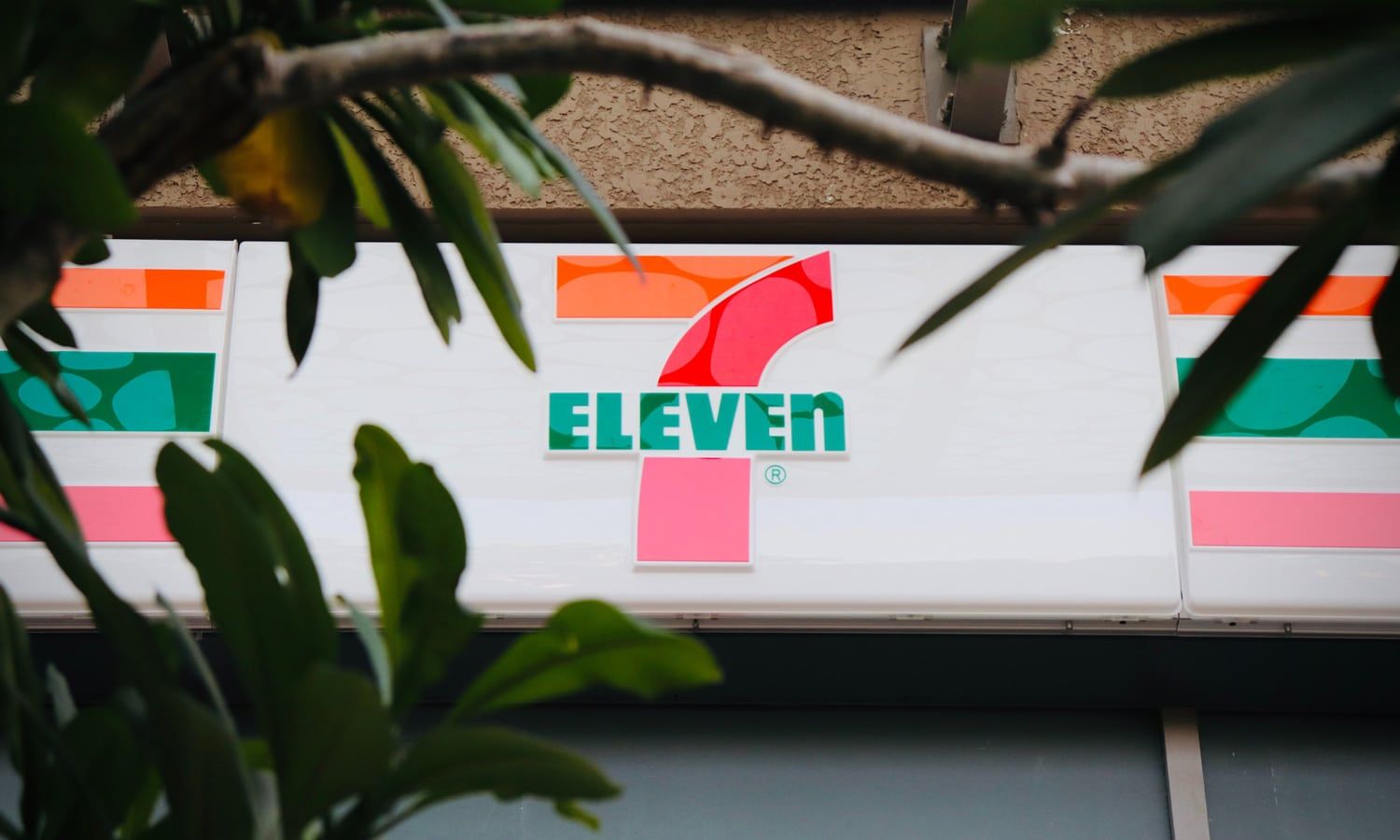
thefreshtoast.com
